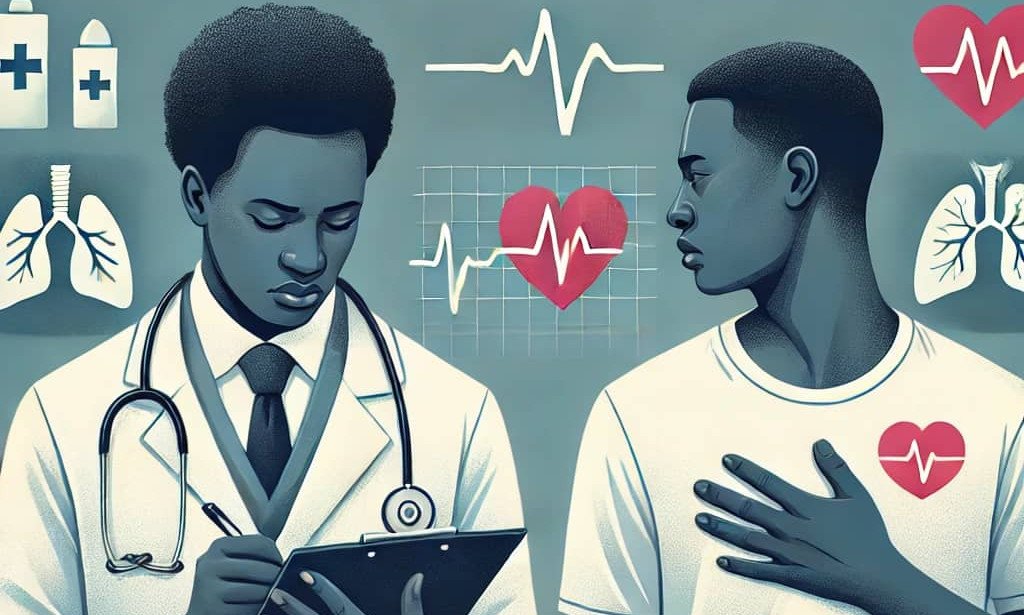Your body is constantly communicating with you, sending subtle (and sometimes not-so-subtle) signals when something isn't right. Learning to recognize these warning signs could be the difference between catching a serious health issue early or facing life-threatening complications. Here are nine crucial body warning signs that demand immediate attention.

1. Parosmia: When Your Favorite Foods Smell Like Garbage
What it is: Parosmia is a condition where your sense of smell becomes severely distorted. Your morning coffee might smell like a portable toilet, bacon could smell like a dumpster, and chocolate might remind you of sewage.
Why it happens: Your smell neurons are literally crossing their wires. When delicate smell nerves get damaged from something as simple as a sinus infection or head injury, they try to repair themselves but the connections get mixed up. Your brain essentially rewrites its smell dictionary, and every definition now reads "disgusting."
Why it's dangerous:About 80% of what you think is taste is smell.When your nose goes out of whack, eating becomes a nightmare. More critically, you won't be able to detect dangerous odors like gas leaks or spoiled food.
What to do: If your favorite foods suddenly smell like they've been filtered through garbage, see a doctor immediately. This is your body waving a major red flag.
2. Finger Clubbing: The Drumstick Finger Warning
What it is: Your fingertips become wider and puffy, with nails that curve downward like tiny spoons. The nail bed becomes soft and spongy, making your fingernails appear to float on a water bed.
Why it happens: Finger clubbing occurs when your blood isn't carrying enough oxygen. Your body attempts to compensate by growing more tiny blood vessels and tissue in your fingertips, causing the characteristic swelling and drumstick appearance.
The scary truth: About 80% of finger clubbing cases are caused by serious lung problems or heart conditions.
Self-test: Try the Shamroth window test. Press the fingernails of your index fingers together, back to back. You should see a tiny diamond-shaped gap of light between your cuticles. If your nails are clubbed, this diamond window disappears completely.
What to do: While clubbing itself isn't painful, it's a flashing red light on your body's dashboard. Make an appointment with your doctor immediately if you notice this change.
3. Corneal Arcus: The Ring in Your Eye
What it is: A pale, grayish ring appears around the colored part of your eye. This isn't a fashion statement—it's fat deposits from excess cholesterol.
Age matters:
- Over 60 (Arcus Senilis): Nearly 100% of people over 80 have this.It's essentially gray hair for your eyeballs and is usually harmless.
- Under 50 (Arcus Juvenilis): This is a warning sign that your cholesterol levels might be dangerously high for your age and can predict heart disease.
What to do: The ring won't affect your vision, but it's acting as a snitch about your cholesterol levels. If you're under 50 and notice this ring, get your cholesterol checked immediately.
4. Referred Pain: Your Body's Broken GPS
What it is: Your body's internal navigation system sends pain signals to the wrong location. You might clutch your arm thinking you pulled a muscle when your heart is actually in distress.
Common examples:
- Heart attack pain radiating to the left arm
- Spleen issues causing left shoulder tip pain
- Liver or gallbladder problems causing right shoulder pain
- Kidney issues manifesting as lower back pain
Why it happens: Your internal organs share nerve pathways with your skin and muscles. When an organ is in distress, your brain gets confused and assigns the pain to a more familiar location.
What to do: Don't ignore persistent, unexplained pain in your chest, shoulders, arms, or back. Your organs might be screaming for help, but your brain is blaming the wrong department.

5. Disappearing Moles: The Vanishing Act You Shouldn't Celebrate
What it is: A mole on your body suddenly disappears without a trace.
Why it happens:
- Immune response: Sometimes your body decides a normal mole is an enemy, attacks it, and it fades away
- Dangerous scenario: Your immune system detected something sinister like melanoma and is fighting it
The ABCDE rule for moles:
- Asymmetry
- Border irregularity
- Color unevenness
- Diameter larger than a pencil eraser
- Evolving (any change at all)
Critical warning: A disappearing mole is the ultimate evolution. Just because it vanishes doesn't mean you've won—cancer cells might have already spread.
What to do: Get any disappearing mole checked by a dermatologist immediately.
6. Night Sweats: Your Body's Midnight Water Park
What it is: You wake up at 3 AM completely drenched, as if you went for a midnight swim, even when your room is cool.
Common causes:
- Non-breathable mattress
- Stress and anxiety
- Certain medications
- Infections (fever breaking)
- Hormonal changes (menopause, thyroid issues)
Serious warning signs: Persistent night sweats, especially with weight loss or extreme fatigue, can indicate serious conditions including certain cancers that produce chemicals affecting your internal thermostat.
What to do: If you're regularly waking up soaked, don't ignore this soggy signal. See your doctor to rule out underlying conditions.
7. Xanthelasma: Yellow Bumps That Signal Cholesterol Trouble
What it is: Yellowish bumps appearing on your eyelids, elbows, knees, hands, feet, or other areas.
Why it happens: These are pockets of fat that get lost in your bloodstream and set up camp under your skin. When you have too much fat in your blood, it's like a traffic jam—some crashes into your skin, forming these bumps.
Size range: From tiny rice grain-sized bumps to growths up to 3 inches wide.
What they indicate:
- High cholesterol levels
- Uncontrolled diabetes
- Pancreatic issues
Good news: If you get your cholesterol under control, these bumps can shrink and disappear.
What to do: Show any yellowish skin bumps to your doctor. That little bump might be preventing your arteries from turning into a grease trap.
8. Persistent Hoarse Voice: When Your Vocal Cords Send an SOS
What it is: Your voice sounds like you gargle with gravel, and it doesn't improve after several weeks.
Why it happens: Your vocal cords are like tiny guitar strings. Various conditions can interfere with their function:
- Allergies or acid reflux
- Vocal cord polyps
- Nerve damage
- In seriouscases: laryngeal cancer
The 2-week rule: Doctors recommend getting any hoarse voice that lasts more than 2 weeks checked with a throat examination.
What to do: Don't assume persistent hoarseness will resolve on its own. Early detection of serious conditions affecting your vocal cords is crucial.
9. Persistent Pins and Needles: When Your Limbs Never Wake Up
What it is: That familiar "pins and needles" sensation doesn't go away after shaking your limb. Your arm or leg feels like it's broadcasting permanent static.
Normal vs. concerning: Temporary pins and needles from sleeping on a limb wrong are normal. Persistent tingling lasting weeks is your body's check engine light.
Serious causes:
- Severe vitamin B12 deficiency (damages nerve protective coating)
- Carpal tunnel syndrome (permanent nerve compression)
- Diabetes (high blood sugar poisoning nerves)
- Multiple sclerosis (immune system attacking nerve sheaths)
What to do: If your limb has been "asleep" for weeks, don't just shake it off. That tingling is an SOS signal from your nervous system requiring immediate medical attention.
The Bottom Line: Listen to Your Body
Your body is an incredibly sophisticated communication system, constantly monitoring and reporting on your health status. These nine warning signs represent your body's urgent attempts to get your attention about potentially serious underlying conditions.
The key to maintaining good health is learning to recognize these signals and taking them seriously. Early detection and treatment of medical conditions can mean the difference between a minor intervention and a life-threatening emergency.
Remember: When in doubt, always consult with a healthcare professional. Your body's whispers today could prevent tomorrow's screams.
This article is for informational purposes only and should not replace professional medical advice. Always consult with a qualified healthcare provider for proper diagnosis and treatment of any health concerns.


You must be logged in to post a comment.